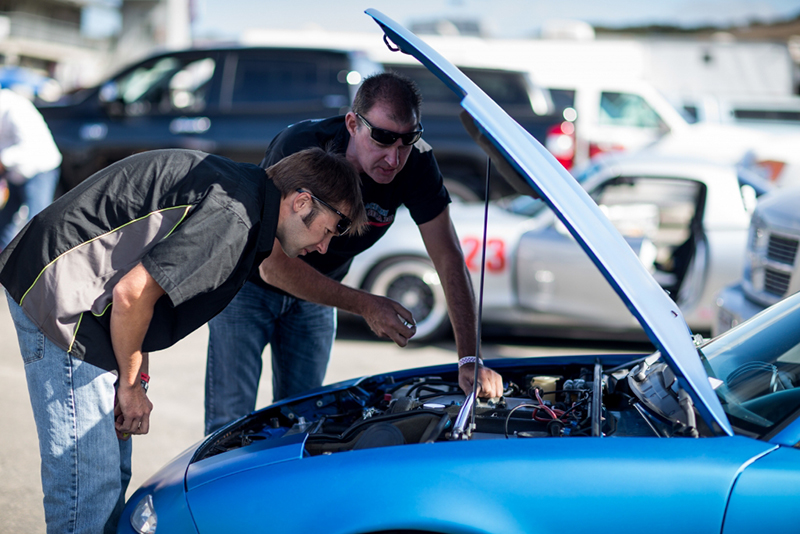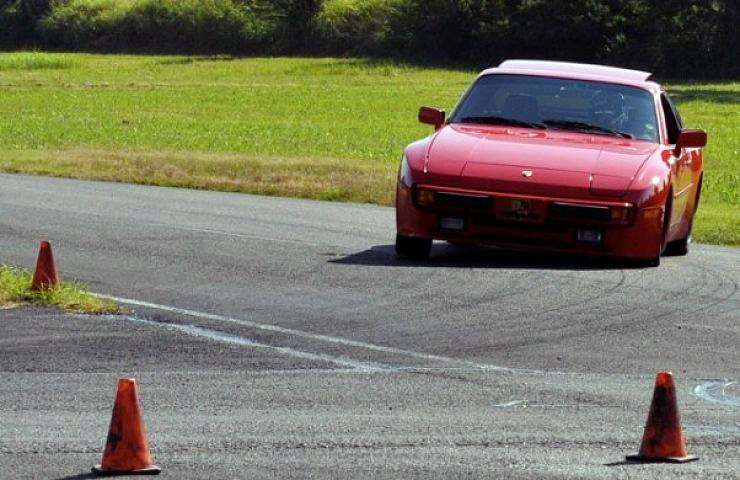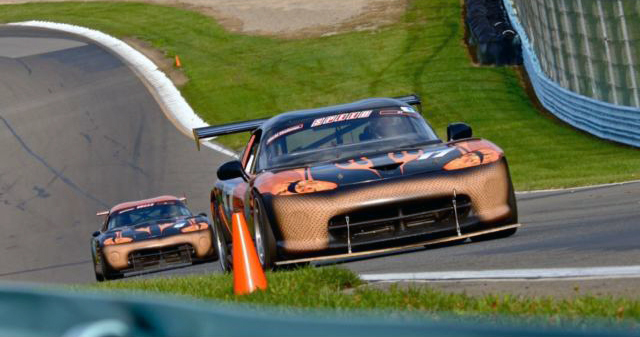Contents
Preparation is key. That means ensuring your vehicle is in top shape before you set out on your first lap. We’ve compiled this guide to help you understand the entire track experience.
Basic Maintenance
Driving fast for a prolonged period of time puts added stress on your car compared to regular commuting. Catching up on any deferred or outstanding maintenance on your vehicle is crucial. This means verifying whether you’re due for an oil change, looking at the condition of your coolant, and making sure your brake fluid is in excellent condition.
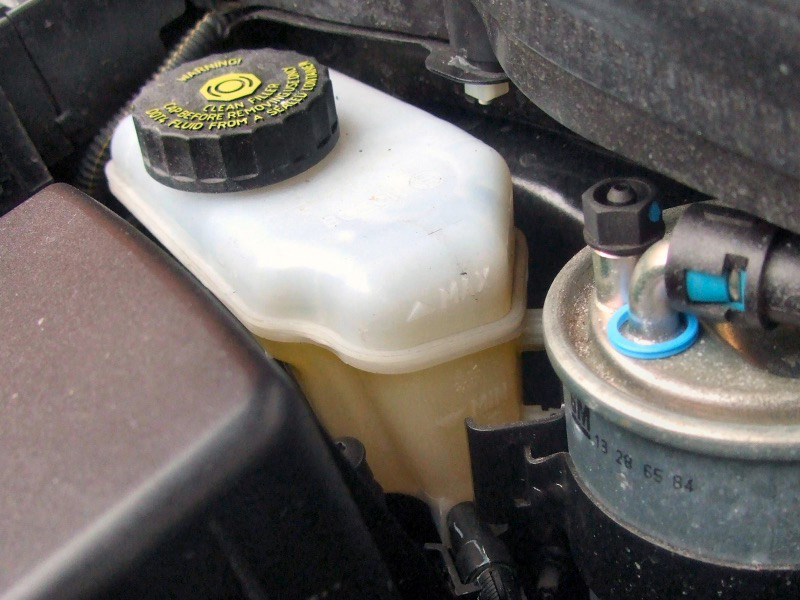
It’s a smart move to check your brake fluid.
Start by popping the cap on the overflow tank and verifying the coolant’s level and color. If it looks dark or muddy, it’s time to change it. Brake fluid is very similar: check the level, and replace any fluid that seems discolored or smells “burnt.” Replacing brake fluid requires completely bleeding it out of each of your four calipers. If you’re uncomfortable doing this, have it done by a mechanic you trust.
Depending on your car’s age, you may also want to swap in fresh manual transmission oil, which is a messy but relatively straightforward job. Automatic transmissions are more complicated, and if you have any concerns about the life of your fluids, again, it’s worth talking to your mechanic about your options before you hit the track.
Get more info: Regularly Check These Four Car Fluids
Thoroughly Inspect Your Car
Knowing that each component is ready for track duty takes more than a quick walk around your vehicle. Consider that you’ll probably be pushing your tires, suspension, and brakes harder than they’ve ever been driven before. So it’s well worth taking the extra time to verify the condition of each of these components.
Tires warrant your focus. You’re just starting out, so you’ll want to verify a few things:
- Make sure tread depth is within normal wear parameters.
- Confirm that there are no cuts, divots, or chunks missing from the tread or sidewalls.
- Verify that each tire is inflated according to your manual’s specifications.
Most suspension problems related to track driving are associated with the weakest links in your car’s chassis. Typically, this means ball joints, bushings, shock mounts, differential mounts, and control arms—parts that are in motion, bear weight, and are stressed by side-to-side transitions. As a result, you’ll want to look for cracks, tears, and looseness and replace any parts that require attention.
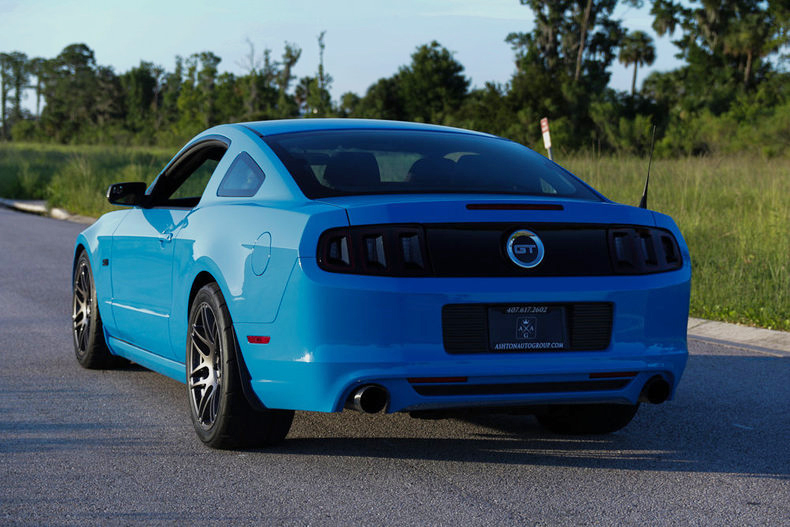
Verify the condition of your tires, suspension, and brakes
Finally, your brake pads—or shoes, depending on the age of your car—should have a healthy amount of life in them. The same is true of your discs. If you’re hesitant about the shape of your brake pads or rotors, replace them. They are among the most important equipment you’ll bring to the track.
See: Choosing the Best Performance Tires
General Condition
Your car will undergo a technical inspection run by the folks who organized the track day you are attending. The person who goes over your car will, of course, check most of what is listed above. But they will also be looking for these things:
- Functional brake lights
- Seat belts that are in good (not sagging) condition
- A battery that’s properly tied down
- Windshields and other glass that is free of cracks or serious chips
Don’t wait until you pull up to the inspection line before fully considering these safety items.
By taking the steps outlined here, you can rest assured that the risk of your vehicle breaking down on the track—or the possibility of a mishap—is no greater than what you encounter daily on the street. Safety is an integral part of the track experience. Race tracks and road courses are closed environments where you don’t have to worry about many of the hazards of a typical commute—such as distracted drivers. On the track, you’re surrounded by professional staff, safety equipment, and trained medical personnel who ensure you have a great (and safe) time.
Brakes
Now that you understand the need for basic maintenance before hitting the track, it’s time to drill deeper into one of the most critical components of high-speed driving: your brakes. What are the basics you need to know?
All modern cars—with very few low-end exceptions—feature disc brakes at all four corners. Disc brakes rely on a metal rotor (or disc) that is gripped by a set of pads, activated by fluid transmitted to pistons inside a caliper, in order to generate the requisite amount of friction to slow the vehicle.
Rotors, calipers, and pads come in various sizes and materials, each dealing with the single most important by-product of braking: heat. The extreme temperatures generated by high-speed stomps on the brake pedal also impact the ability of your car’s brake fluid to function to spec throughout a session.
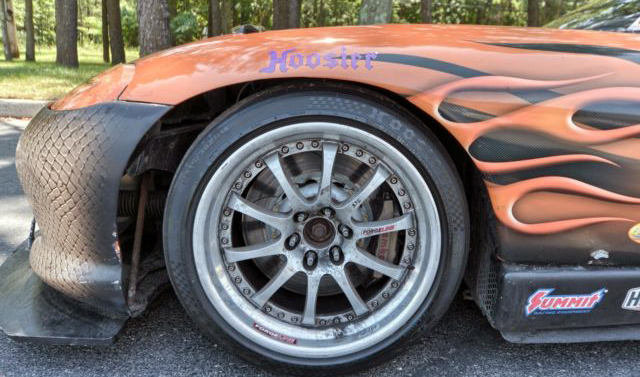
This Viper is running smooth rotors up front, with an aggressive track pad.
Heat Is the Enemy
It’s easy to get distracted by the size of your calipers, pads, and rotors when prepping for a track day. After all, logic suggests that big rotors and equally-large pads will generate more friction and help stop a car more quickly. In addition, multiple-piston caliper designs further enhance stopping power.
All of these things are true, but as with most aspects of automotive performance, it’s not a simple matter of bigger is better. The truth is your car’s braking hardware was designed from the factory to consider not just your vehicle’s weight but also the additional mass associated with passengers, cargo, and potentially even a trailer. That means mechanically, at least, it’s got what it takes to get you stopped on the track.
Whether it can handle the heat generated in the process is another story. In highway driving, you rarely call on the full force of your braking system in anything other than an emergency—unless you happen to live where deer are always jumping in front of your car. This means that you don’t have to worry about heat’s effect on your brake components.
Driving on the track is a different story. Full-force braking occurs several times a lap—if not before every corner. Your factory components will likely not be able to take the heat that comes with that level of friction. Trouble will manifest itself in a soft, spongy brake pedal as the fluid begins to boil (dumping air into the system), and longer stopping distances due to overheated pads that no longer provide enough grip on the discs.
You Have Options
There are easy things you can do to beat the heat. First, and most importantly, swap out your stock brake pads for a set made from a more track-friendly material. If you already own a high-performance car, there’s a chance that the factory pads can deal with the stress of track driving. Even then, upgrading your stoppers is never a bad idea—especially since it’s a cost-effective modification you can most likely do yourself.
Track pads come in a wide range of materials and price points, with some—like these Hawk DTC-30 pads—exclusively oriented toward competition. Others—such as EBC’s Yellowstuff line— attempt to balance street and track use. They are made from materials that provide a strong initial “bite” into your rotors while minimizing any fade in stopping heat build-up. As a beginner, it’s always better to go with a street and track pad like the EBC option or the Hawk HP+ because these can be safely driven to and from an event—unlike dedicated race pads that require the warmth of racing speed friction to offer safe stopping, something you won’t encounter on the street.
Next, replace your brake fluid with a high-temperature fluid that meets the exact DOT specifications listed in your vehicle manual.
Affordable options include ATE TYP200 and Motul RBF 600. Essentially, you are looking for fluid compatible with your car that has a boiling point of more than 500 degrees Fahrenheit. You’ll need to completely replace the fluid already in your car. This means a full bleed from each of the four calipers and potentially activating your car’s ABS valves, which might not be possible unless you use a special tool.
If you’re uncomfortable doing this, your local mechanic will be able to do it at a reasonable cost—but you should become familiar with your vehicle’s general brake bleeding procedure so you can address issues that might surface after an intense track session, like air in the brake lines.
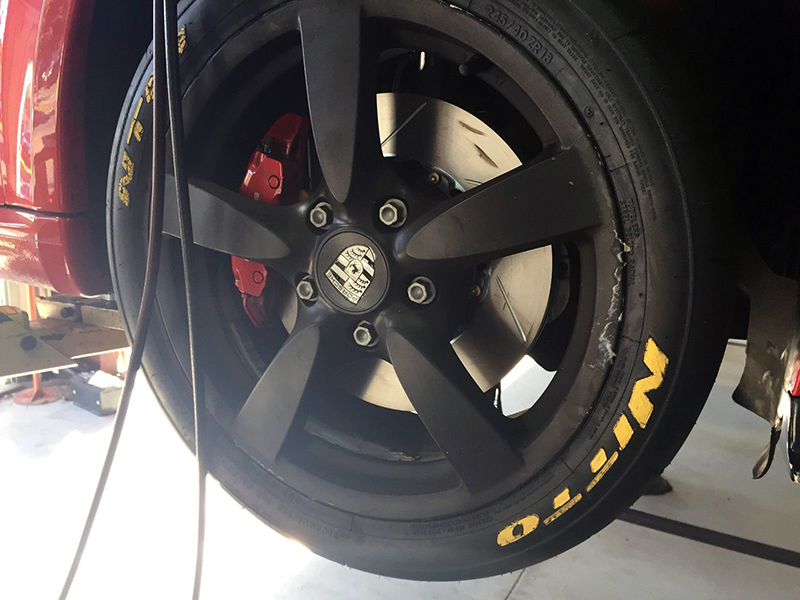
Slotted rotors aren’t necessary when you first start out on the track.
Finally, directing cold air to your brakes is a great and inexpensive way to keep them from overheating on the track. Some cars have brake ducting installed already, while others might require you to remove a fog light to install a racing brake duct or run small tubing or a hose from under the front bumper to just behind the brake itself. If you run your own cooling, ensure it’s attached tightly enough that it won’t come loose while driving and potentially become a hazard on the track.
Shop now for brake rotorsDid you notice that we haven’t mentioned anything about brake disc replacement? That’s for a good reason. Yes, you can buy slotted or drilled discs, which have channels carved into them and/or holes punched through them to enhance cooling and help remove the gasses generated by brake pads at high temperatures. However, you sacrifice strength and longevity for gains you probably won’t notice when you start out on the track. So save your money and keep your stock blank rotors on the car.
Suspension
There are many different changes and setups related to tuning a car’s suspension system for the track. Here’s the good news: These decisions can wait. Your initial forays to the race track should be on your car’s stock suspension so you can focus on getting comfortable in a high-performance driving environment.
You’ve been driving on your original setup for some time, so you already know how it will react in any given situation. That’s a significant advantage. While keeping things familiar and straightforward is a good idea, you can still consider making minor upgrades. Small changes will help you stay on budget and keep you from making your car overly stiff—which can be unpleasant when you’re back on the street.
Lowering Springs
Your car’s springs were tuned at the factory for a balance of handling and comfort. That requires compromises in both departments. Installing a set of lowering springs is one of the least expensive upgrades you can make to your vehicle’s suspension.
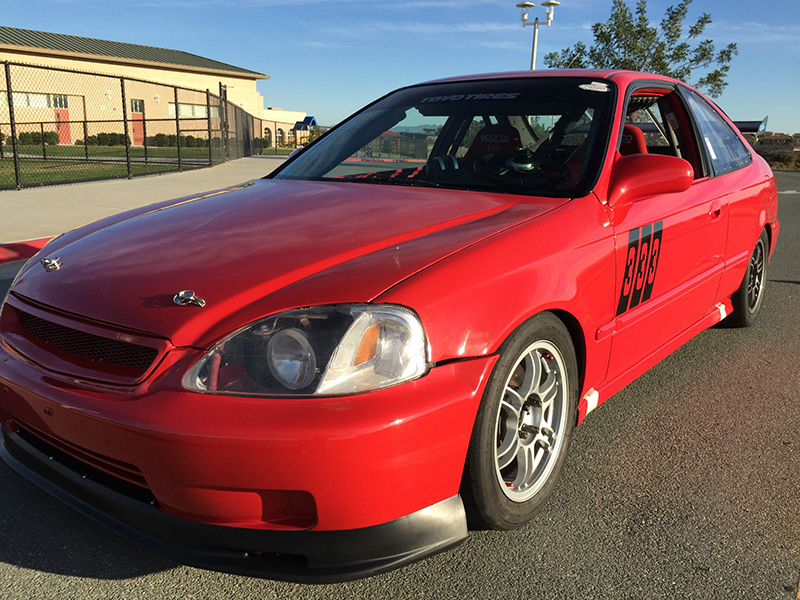
This Honda Civic is modestly lowered to improve handling.
By dropping the ride height of your car by one to two inches, you reposition its center of gravity closer to the ground. That helps when it comes time to move its mass through a corner. In addition, the higher spring rate on a set of lowering coils will reduce the body roll and the pitching and diving that occurs when turning, accelerating, or braking at higher speeds.
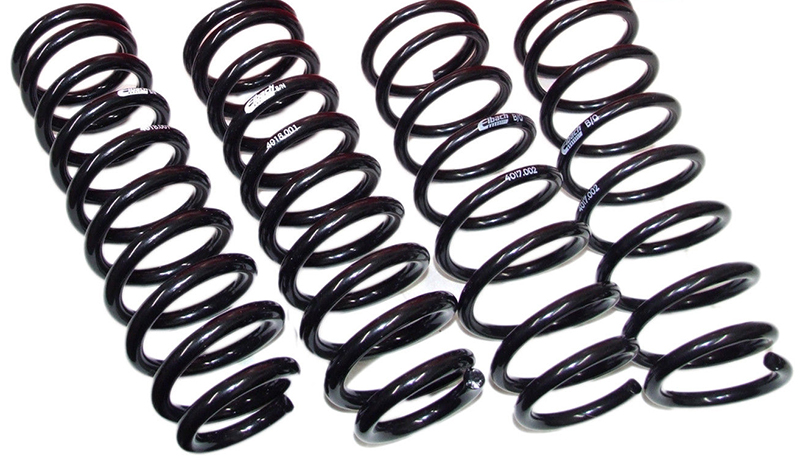
You can drop the height of your car with kits, such as this one from Eibach.
Lowering springs are widely available for almost any automobile, and if you stick with a modest drop in ride height, then you don’t have to worry about bottoming out in daily driving. These so-called sport springs, such as the kit available from Eibach, are notable for not overly increasing stiffness. This means the learning curve on the track (and comfort on the street) won’t be adversely affected as harshly as with racing springs.
Shock Absorbers to Match
Your car’s suspension is a system, which means changing one aspect of how your car rides has a definite impact on other behaviors. This is particularly true when it comes to handling. For example, with stiffer springs, your car’s stock shock absorbers may no longer adequately dampen the bumps transmitted to the chassis or deal with quick directional changes in a track environment.
Installing performance shock absorbers when you replace your stock springs with a lowering kit is a good idea. For starters, it’s cheaper and easier to do both simultaneously since the suspension needs to come apart anyway. More importantly, it lets you match your upgraded springs with shocks tuned to handle a more aggressive character.
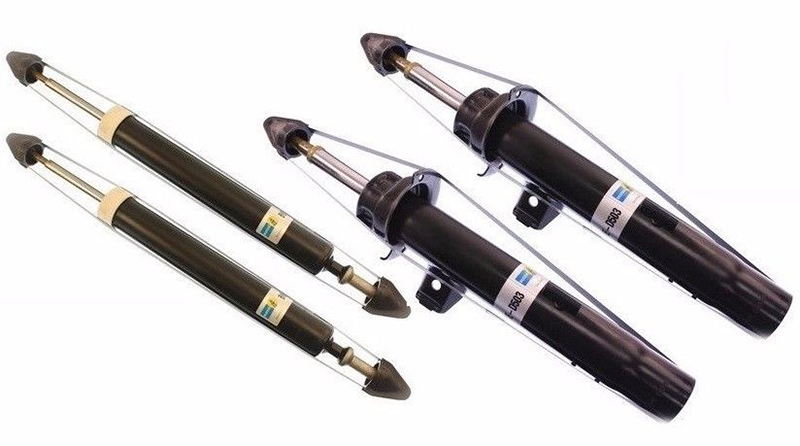
Sport shocks, like these from Bilstein, can help control vehicle movement.
Again, there are many shock absorber options out there—from work-focused heavy-duty shocks intended for towing to fully-adjustable coilover kits with custom rebound and compression settings. We recommend something in the middle. A sport shock, like the Bilstein Sport, can control vehicle movement without introducing an overly stiff feel.
Shop now for sport shock absorbersYou might feel a rougher ride over broken pavement when riding on shocks with performance-oriented rebound and compression tuning. But they will also offer excellent feedback in a track environment without the squishy, vague experience many stock setups provide. In addition, when pushed hard, a sport damper will be less likely to fail than comfort-oriented designs intended to smooth out the bumps.
Related: A Quick Guide to Coilovers
Consider Sway Bars
If you own a high-performance car, you might not need to modify the shocks or springs during your first year of track driving. However, no matter what you’re driving, upgraded sway bars can make a significant difference in handling.
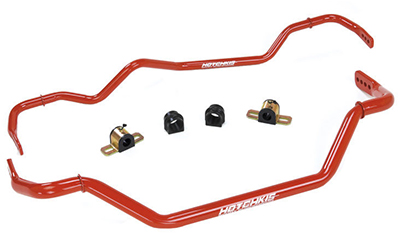
Sway bars reduce body roll.
Sway bars are mounted at the front and the rear of your vehicle. They work to reduce body roll when a car is pitched into a corner at high speeds. Also known as anti-sway bars or stabilizer bars, these round metal bars connect one side of the suspension to the other, typically just above or below each set of axles (although sometimes mounted to the front or rear).
When a vehicle’s suspension moves, the coil springs compress, but sway bars twist. Their torsional rigidity reduces roll. As with springs, if you go too stiff with a stabilizer bar, you can easily upset your car’s chassis by making it too difficult for each wheel to move independently while cornering. Most of the time, a thicker bar is stiffer, although some aftermarket options may be hollow and instead rely on specific materials to achieve the desired rigidity.
Shop now for sway bar kitsSway bars are a useful suspension tuning tool. A stiffer bar at the car’s rear generally helps to reduce under-steer, while a stiffer bar up front can control over-steer. You can also find adjustable bars that allow you to vary their mounting points and adjust vehicle behavior. When getting your start at track driving, we recommend installing a matched set of sway bars that will help reduce body roll without dramatically changing the car’s overall attitude.
Don’t Overlook Bushings
Flashy suspension hardware won’t make a difference if your car’s basic chassis components can’t handle the added stress of track driving. Rubber bushings are critical to your suspension. They serve as the mounting, adjustment, and rotation points for sway bars, control arms, tie rods, differentials, and nearly every other chassis component.
Over time, rubber bushings can wear out, tear, or dry to the point that they no longer meet their original specifications. This can lead to suspension components feeling loose. If it gets bad enough, a worn-out bushing can reduce stability in high-speed driving.
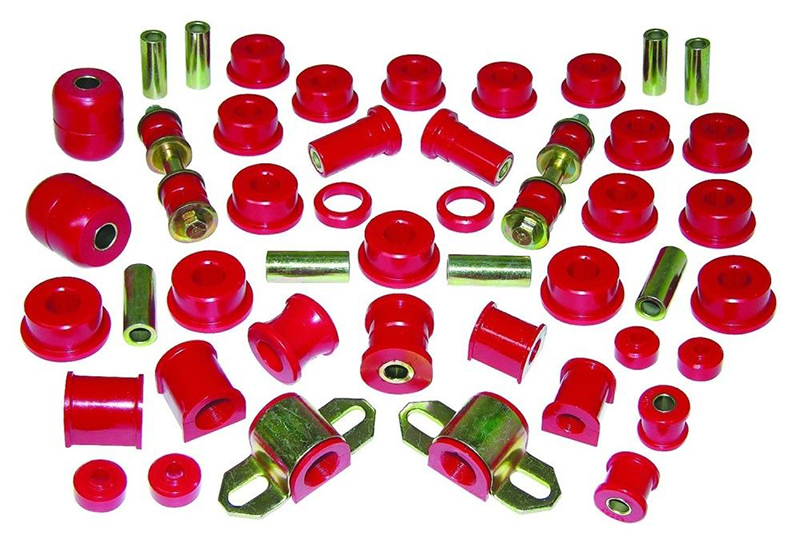
Over time, rubber bushings can wear out. The solution can be found with a bushing replacement kit.
Anytime you have your car up on a lift, it’s worth checking on your bushings. Bushing replacement kits are relatively affordable and consist of either rubber or stiffer material like longer-lasting polyurethane. The latter is recommended for track use, although you might notice additional squeaks and noises from your suspension (as well as a stiffer ride) after installation.
Alignment
With any adjustments to your suspension, you should verify that your car is still correctly aligned. So let’s go one step further. We recommend discarding the factory alignment specs when taking your vehicle on a road course. Alignment should be the first and the last thing you do to your suspension system. Aggressive track alignment matched with factory settings will unlock new, surprising handling capabilities.
Factory wheel alignments are designed to do three things:
- Introduce understeer to prevent a loss of control in everyday driving
- Reduce pulling from one side to the other on highways
- Extend tire life
While acceptable for the street, each of these concepts works against you on a race track. When getting started in the world of performance driving, you want to dial in the most neutral handling characteristics, which means eliminating factory understeer and keeping the tire in contact with the tarmac while cornering.
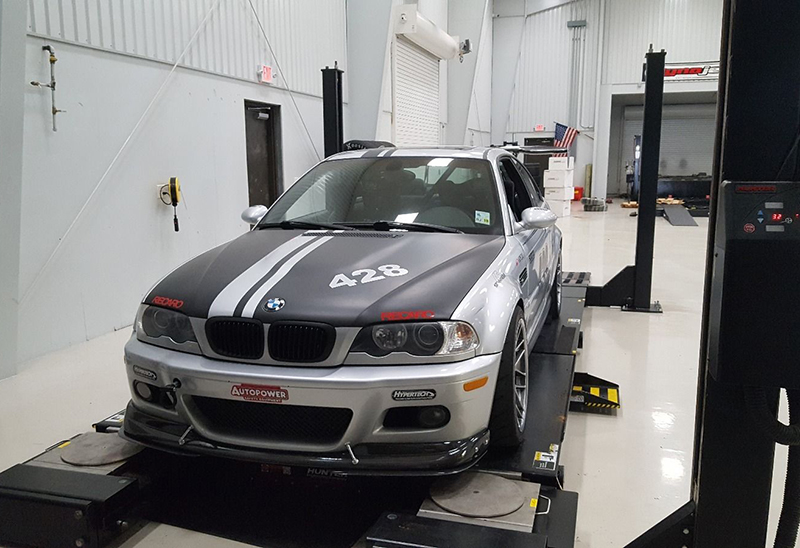
The top of the tire on this BMW race car is closer to the body than the bottom of the tire, indicating that it’s running negative camber for increased traction.
We won’t cover the full details of how wheel alignment affects driving, but in basic terms, you will want to add:
- Negative camber (the angle at which the wheel stands as compared to a vertical line drawn through the center)
- Negative caster (the position of the center of the wheel as compared to the front of the car, with negative changes moving it closer)
Exploring these settings with a qualified alignment technician will help improve corner turn-in and neutrality at speed. In addition, you’ll find information about the best alignment characteristics for your car’s stock chassis in an online forum dedicated to your particular model. Use that as your starting point to create a balance between a track setup and a street setup.
Tires
It’s easy for a track novice to get overwhelmed by the many types of track-oriented tires. We’ll start by looking at the tires best suited to your first few trips to the track. Then we can examine how you can build toward a more aggressive rubber compound once the basics are mastered.
Safe Stock Tires for First-Timers
On your first visit to a high-performance setting, you should be riding on the same tires that you drove to the track. Of course, you should inspect those tires beforehand to make sure that they have the following:
- A safe amount of tread. A good rule of thumb is 4/32 of an inch of tread depth, which can be quickly verified by inserting a quarter upside down between the tread blocks. George Washington’s head should be at least partially obscured by a tire with a safe amount of tread.
- No bulges, gashes, or bumps. Verify that you don’t have any chunking in the tread, especially along the side of the tire.
- Sufficient remaining shelf-life. The last four digits of the Department of Transportation code on the tire’s sidewall indicate the manufacturing date. For example, 0715 means the tire was produced in the seventh week of 2015. If your tire is nearing the fifth year of its lifespan, it might not perform as well as it could and may wear more quickly on the track. You should consider replacing it if it’s older than five years, even if the tread looks fine and the tire is otherwise undamaged.
Why are we recommending your car’s stock tires, whether all-season or basic summer, for your first few track days? For starters, you are familiar with these tires. You’ve probably driven on them for a decent period of time, and you probably already know what your car feels like when they start to lose traction or get to the edge of their grip. Comfort and familiarity are a big part of being safe and having fun on a track.
Shop now for summer tiresCompared to a high-performance tire, a standard street tire will give you a lot more warning before it breaks loose. You’ll hear a high-pitched squeal and feel lateral movement as the tire slowly moves sideways before losing its grip on the tarmac.
Both of these cues are essential teaching tools. By starting off with the relatively low limits imposed by a standard street tire, when you do spin out it will be at a reasonable speed.
The Next Step: R Compounds or High-Performance Summer Tires
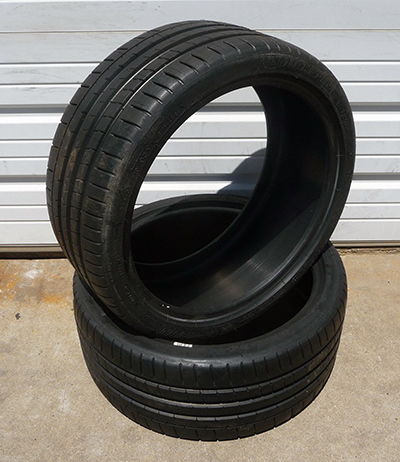
High- performance summer tires boost grip and improve heat resistance while providing the necessary feedback for beginners.
Eventually, you will want to take the next step toward better grip. That means purchasing either a set of R-compound tires mounted on dedicated rims that you bring to the track and swap out in the pits or a high-performance summer street tire that you can still drive to and from the event.
We strongly recommend the latter approach. Obviously, a single set of tires will be cheaper than buying one set for the track and another for the road.
High-performance summer tires such as Michelin Pilot Super Sport, Pirelli P Zero, Toyo Proxes, Hankook Ventus V12 evo2, and Goodyear Eagle F1 Supercar significantly boost grip and improve heat resistance while offering the recommended auditory feedback and progressive loss of traction.
R-compound tires, on the other hand, can be so sticky that their grip sometimes feels like an on/off switch. This means you’ll be doing fine mid-corner until suddenly you aren’t, quickly going into a no-warning slide, spin, or fishtail. The “R” refers to race, which means the rubber compound in these tires wears out much quicker than a street tire. That’s because it’s softer and stickier when it warms up, trading lifespan for the ability to maintain traction during high-temperature track conditions.
Related: Street Tires Versus R Compounds? Strong Advice for Track Newbies
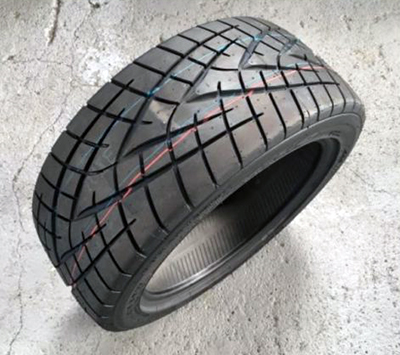
The “R” in R-compound refers to “race.”
Many R-compound tires are sold as DOT-approved street tires—including popular models like the Toyo Proxes R1R. But driving R-comps daily will significantly shorten their lifespan. Each heat cycle—heating up to full operating temperature and then cooling back down again—gradually wears out the rubber. Their tread patterns are also not all that conducive to channeling water safely, meaning they can be risky to drive in a rain storm.
Tire Care at the Track: Inflation and Temperature
Regardless of the kind of rubber you bring to the track, you’ll need to follow some basic tire care and inspection guidelines to maximize lifespan, figure out how your car is performing during a session, and try to improve performance over the course of the day.
A stiff sidewall will help a car change directions during high-speed track driving. You’ll want to use the largest possible contact patch—the part of the tread that touches the pavement. Again, the level of inflation plays an important role.
There are three basic tools to achieve proper tire pressure:
- An air pressure gauge
- A tire pyrometer
- A notepad
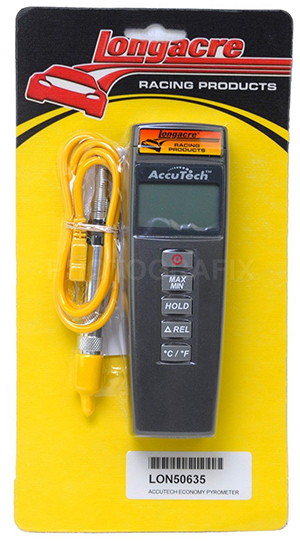
A tire pyrometer measures the rubber temperature.
A tire pyrometer measures the rubber temperature. Make sure you get one that has an actual probe that makes contact with the tire itself, not a laser thermometer, which reads the tire’s surface temperature (not the rubber’s internal temperature).
Inflate your tires to the factory rating when the tires are cold. Typically, this is between 30 and 45 psi, depending on what’s printed on the door jamb or in your vehicle’s manual. Be sure there is even pressure in all four tires. You want a firm baseline for starting out. Once you return from your first session, measure each tire’s temperature and air pressure as quickly as possible because they’ll start to cool down almost immediately. Take those temperature readings in three positions: the inside, middle, and outside of the tire’s tread.
Those three temperatures will immediately show you whether the tire is over-inflated or under-inflated by revealing which parts of the contact patch are working the hardest.
- If the outside temperatures are higher than the inside, that indicates that the tire is under-inflated. The middle of the tire isn’t making as much contact as it should.
- If the inside temperature is higher than the outside, the tires are over-inflated. The middle is doing all the work and the outsides are staying cool.
Ideally, you’ll have an temperature across all three parts of the tire. Throughout the day, you can incrementally adjust the air pressure to achieve that goal. Remember to jot down all of these readings in your notebook so you can refer to them in the future.
Shop now for air pressure gaugesYou can also adjust tire pressures front and rear and side to side, to compensate for understeer, oversteer, and braking behavior. However, that’s beyond what a beginner should worry about the first few times on the track. Just concentrate on proper inflation for each tire. Also, don’t be concerned if one tire shows a different temperature than the others. Some tracks might have more right-hand turns than left-hand turns, which means that one side of the car will be working harder than the other on any given lap. The idea is to get each tire to show even temperatures across its own surface, not compared to the other wheels.
Safety
No one likes to think about the worst-case scenario on the track. But safety is the most crucial aspect of any motorsports activity—whether you’re at a driving school, running in a time trial, or racing door-to-door.
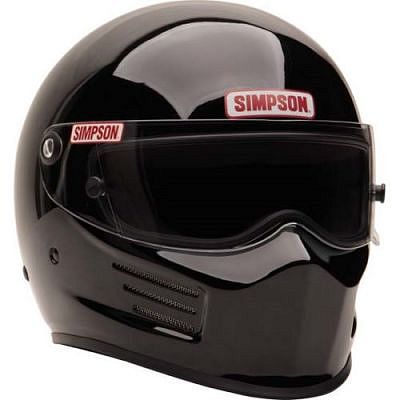
This Simpson Racing Bandit helmet is certified as SA2015.
Fortunately, novice track drivers can rely on well-established rules and guidelines provided by the club or group in charge of the racing experience. So let’s look at how to stay safe by meeting track regulations.
Helmets
Without exception, you will be required to wear a helmet while driving on the track. This is not only for your safety, but it’s written in stone in the insurance policy of every road course facility, dirt oval, and racing club. Helmets are just common sense. They protect the most important organ in your body: your brain.
eBay has an extensive selection of auto-racing helmets. But what type of helmet should you buy? How much should you pay? Choosing the right helmet is more complicated than just maxing out your credit card on the most expensive helmet. A lightweight, comfortable design is desirable, but you should also consider visibility, style, club rules, and the manufacturing date.
All helmets legal for use in an amateur motorsports environment are certified by the Snell Foundation. The standards are updated every five years, so a helmet with an official SA2010 sticker was certified to the 2010 standard, while an SA2015 sticker meets the 2015 standard.
Shop now for racing helmetsSnell standards apply for a 10-year period. In other words, an SA2014 helmet will be accepted by most organizations until 2024, but SA2005 helmets will no longer be allowed. We highly recommend buying a helmet with the most recent certification to ensure you get the most use out of the safest helmet.
Open Face vs. Closed Face vs. Motorcycle Helmets
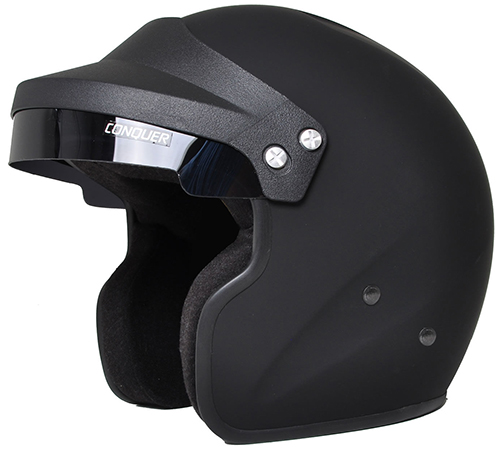
Open-face racing helmets can offer better visibility but less protection.
Some track clubs require a closed-face design with a full visor. If that’s not the case, then you have choices. We recommend trying on various designs for comfort and visibility. Open-face helmets are less hot and can offer better visibility, but they don’t protect your chin from an impact.
While you might be tempted to use a closed-face motorcycle helmet, which is often less expensive, most organizations will not allow motorcycle helmets to be used in an automobile. Even though motorcycle helmets are certified (with the M sticker) by the Snell Foundation, the safety specifications are entirely different. The bottom line: Motorcycle helmets are not safe in a track car.
Do I Need a HANS Device?
A Head and Neck Support (HANS) device is a piece of safety equipment designed to reduce injuries by immobilizing your head in a crash and preventing whiplash or extreme rotation. Traditionally, HANS devices required more elaborate restraints built into a vehicle’s belt system, but portable hybrid units are now available. If you can afford one, it’s a worthwhile investment, even though most clubs don’t require them.
Multi-Point Belts and Harnesses
Racing harnesses using four, five, and even six attachment points are popular on the track.
- Harnesses do a great job keeping your body locked to the seat while driving, even if the car has smooth leather or vinyl seats.
- They will hold you firmly to your seat in the event of a crash.
- They are unnecessary for beginners.
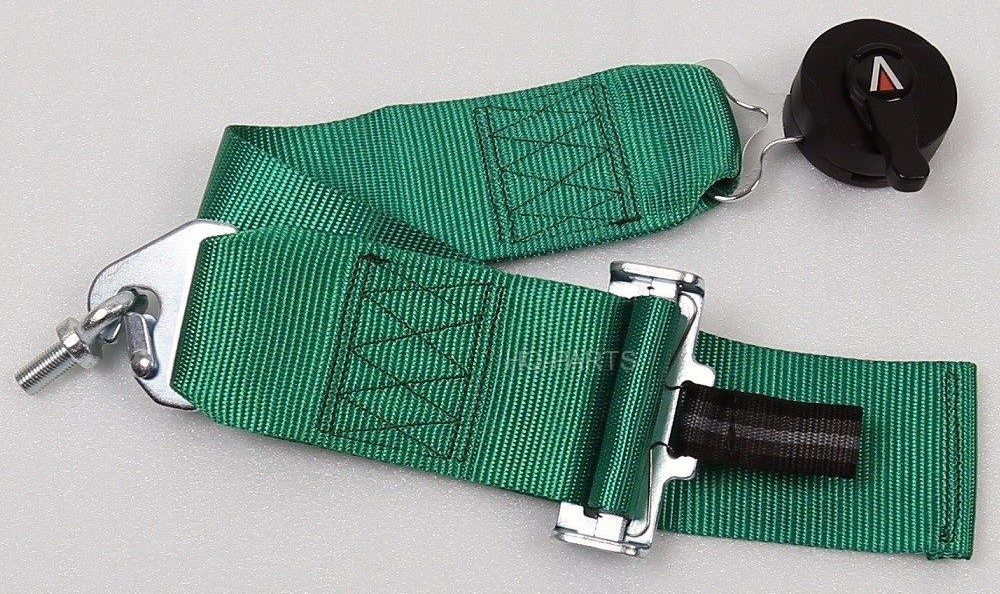
Racing harnesses are not necessary for beginners.
Here’s the issue: Multi-point harnesses are only helpful if installed in conjunction with a harness bar, roll bar, or cage, and specific racing seats that can accommodate them. Without these other components, harness belts can harm you.
Shop now for racing harnesses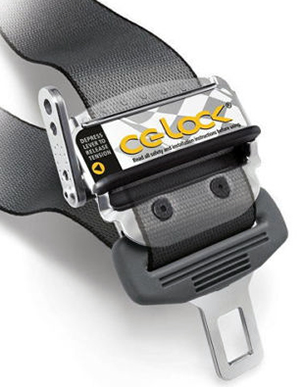
A CG Lock will tighten the hold of a three-point seat belt.
Harness shoulder straps must be perfectly level with the anchored bar—not bolted to the floor or the seatbelt receptors of a car’s back seat. If the straps are angled down, then an impact or rollover could put additional strain on your spine. In fact, if there’s no roll bar in your vehicle, some clubs won’t let you use harnesses at all. In addition, in the event of an accident, you can’t slouch or roll your body to avoid a collapsing roof.
As a beginner, you should use your car’s three-point seat belt. That system has been rigorously tested and is very safe. If you want to enhance the three-point system, consider gear like the CG Lock, which will tighten its hold through the corners. Don’t worry about what other people think about stock seatbelts: You’re there to have fun and be safe, not meet a vague idea about what constitutes a “serious” track car.
Roll Bars for Convertibles
If you own an open-top car, such as a Mazda Miata, you should verify that your track club doesn’t preclude roadsters or ragtops for insurance reasons. For example, some clubs might accept an open-top car but require a fixed roll bar wrapped in FIA or SFI-approved safety foam rather than the vehicle’s stock rollover protection equipment.
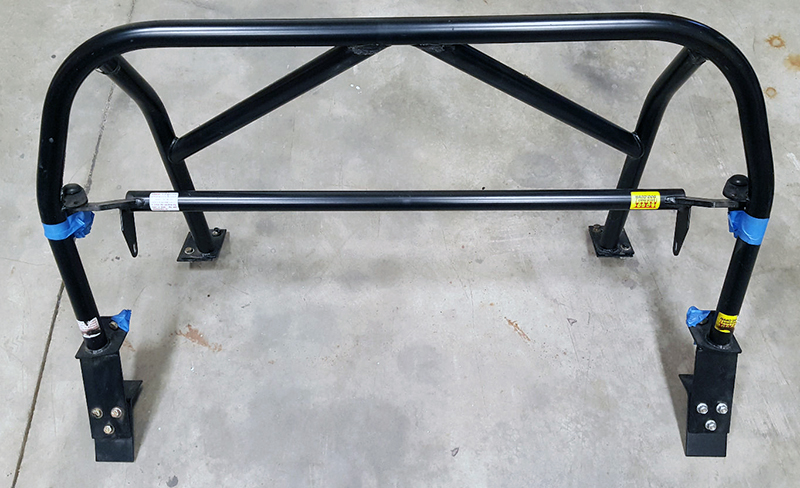
You can find used roll bars, like this Hard Dog unit for the Mazda Miata.
Safety marshals might deploy the so-called broomstick test—running a broomstick handle or measuring stick from the top of the roll bar to the top of your vehicle’s front fender. To pass the test, your seat must be low enough in the car for your head to fit under the stick at that angle. You may even be required to use arm restraints that keep your limbs from reaching outside the automobile in a rollover.
Snapping on a removable hardtop might not be allowed by your track. Unfortunately, most of those tops aren’t made of material that will protect you from anything more than the sun and rain.
Shop now for roll barsEvery track club has its own rules. Take the time to find out in advance whether convertibles are welcome or if you will need special safety allowances. It’s a good general safety rule to look up your track’s regulations or call to confirm all the guidelines before showing up for your first day at the track.
Rules, Regulations and Club Policies
In the final section of this guide, we will explore the rules and policies that you’ll likely encounter at a local or regional racing club. In some cases, racing organizations—like the BMW Club of America—focus on driver training. Other groups, like the Sports Car Club of America (SCCA) and the National Auto Sport Association (NASA), highlight the thrill of competition. Others offer a mix of the two, blending on-track instruction with a time-trial series.
In the days leading up to a track event, learn as much as possible about the club and its events. That’s usually a matter of visiting the club’s website, where you will find rule books, walk-throughs, and policies. After you register, some clubs will send you a welcome packet with all the relevant background information and terms.
Don’t just skim through this material. Read everything carefully. Nobody expects you to absorb all the rules and guidelines on your first day, but don’t go in cold, either. It’s a good idea to print or bookmark key sections for easy reference during the course of the event.
Show Up at Tech Inspection Early and Ready
Most clubs will inspect your car before allowing it on the track. Ensure that you have followed its safety guidelines, that the vehicle is in good overall condition, and that there aren’t any red flags that could indicate a problem with the vehicle.
The requirements for the tech inspection will be described in the club’s guidelines. It generally means showing that you have functional brake lights, no loose wheels, fresh brake fluid, a clean passenger compartment free of anything that could become a projectile in an accident, and an empty trunk. Your tires will be checked for tread level and condition, and of course, your helmet will be verified according to club safety regulations.
If you get to the track relatively late, the line for a technical inspection might get backed up. So line up early, pop the hood and trunk, and get the inspection out of the way.
Listen During the Driver’s Meeting
Another rite of passage is a morning-time driver’s meeting. This session serves as a run-through of the rules, expectations, and track-specific information. Don’t skip the driver’s meeting. In fact, some clubs won’t let you run your car if you miss this session. Besides, there’s a good chance that you’ll meet your instructor for the day after the meeting wraps up.
Usually, you’ll be shown the flags used that day, and there will be a discussion of the passing rules, passing zones, and flag stations at the facility. Feel free to ask as many questions as necessary to understand the rules thoroughly. This is your opportunity to learn and get comfortable before the organizers get busy.
Stick to Your Run Group
Clubs usually organize their events so that each driver is assigned to a particular run group, which is a collection of drivers that will be on track together during a given session. Typically, run groups are divided based on the drivers’ skill levels and on their cars’ performance potential.
As a beginner, you will likely be on the track with an instructor in the passenger seat. Whether a first-time driver is behind the wheel of a Ferrari or a Ford Focus doesn’t matter—everyone will learn the ropes and slowly build up skills. In other words, don’t be intimidated by the presence of much faster cars in your run group (and don’t underestimate the capabilities of those driving slower automobiles). You might be surprised by the lap times by the end of the day.
Obey the Rules and Pay Attention
Nothing quickly reveals a rookie driver faster than forgetting or flouting the club’s rules. Most mistakes are oversights caused by a combination of lack of experience and too much excitement.
Small things can be important:
- If you’re asked to drive in a clockwise direction around the garages or pits, then follow that rule because everyone else will expect cars to come exclusively from that direction. You don’t want to put other drivers at risk.
- Passing zones on the track are placed for safety reasons. Drivers need to know when someone is overtaking them on any given lap. So don’t just pull out and blow by somebody in front of you, even if they’re slower in a specific section of the circuit. You’ll run the risk of being black-flagged (ordered to pit).
- Does your club require that you point other cars by, rather than offering a free-to-pass format? If so, remember to check your mirrors and issue them as necessary to prevent a train of cars from piling up behind you.
- Keep an eye out for flags. They are the most direct way for a club to communicate the situation on the track ahead, which could require you to slow down or stop. No one wants to have so-called red mist—the desire to win above all else—descend over their eyes as they drive and miss a vital flag, such as the checker ending the session. Anything that delays the next run will irritate drivers and organizers.
- Stay hydrated. It can get hot on the asphalt.
Stay Relaxed and Have Fun
It’s only natural that you’ll be nervous during your first runs on the track. You might feel like everybody is watching and judging your driving ability. So take a deep breath and relax.
Here’s the reality. Most drivers are focused on improving their lap times and aren’t interested in you. No one expects you to set a club record your first time out, and if you can drive safely and respect the rules, you’ll impress far more people than you would by blazing up the track.
The key is to have fun and be safe. Talk to other drivers, make new friends, and ask questions whenever you want to learn more about driving, cars, or some aspect of the track experience. Remember, everyone around you was once a novice. At that point, they appreciated a more experienced driver taking the time to make them feel at home. So give one of those seasoned track drivers a chance to be that person for you.
Shop now for racing helmets

